

James Wong
2026 Audi SQ5 review: Quick drive
6 Days Ago
With supercharged V8 power and an achingly beautiful design, the F-Pace SVR is a modern British GT with genuine handling talent and family-friendly practicality.



Marketplace Editor
New from
$74,990
excl. on-roads

Marketplace Editor
New from
$74,990
excl. on-roads


Marketplace Editor
New from
$74,990
excl. on-roads

Marketplace Editor
New from
$74,990
excl. on-roads
Quickly see how this car stacks up against its competition. Select any benchmark to see more details.
Where expert car reviews meet expert car buying – CarExpert gives you trusted advice, personalised service and real savings on your next new car.
The days of V8 performance cars are numbered.
Electrification aside, we’re seeing more manufacturers move away from big-block motors in favour of downsized, forced-induction units.
That’s what makes something like the 2021 Jaguar F-Pace SVR so bloody special.
With 5.0 litres of capacity and a whiny supercharger tacked on, the F-Pace SVR takes the torch from legacy go-fast luxury sedans like the Jaguar S-Type R and XJR. It’s the only Jaguar other than the F-Type sports car available with a V8.
For 2021 the family-friendly Big Cat has received a minor nip-and-tuck inside and out, headlined by a torque bump, fine-tuning of the driver controls, and the introduction of JLR’s latest infotainment and connectivity features.
Is it worth snagging one of the last of a dying breed?

The F-Pace SVR is something of a performance bargain compared to better-known rivals, priced from $142,170 before on-road costs.
Our test vehicle had about $10,000 worth of options, bringing the as-tested sticker to $153,160 plus on-roads – still not bad in this segment.
We’ll get to what’s standard and what’s optional in a bit, but here’s a look at where the Jag sits compared to its rivals:
All prices exclude on-road costs
It’s also worth noting, from the list above only the Jaguar and the Mercedes feature a V8 under the bonnet – a key factor for many buyers no doubt.
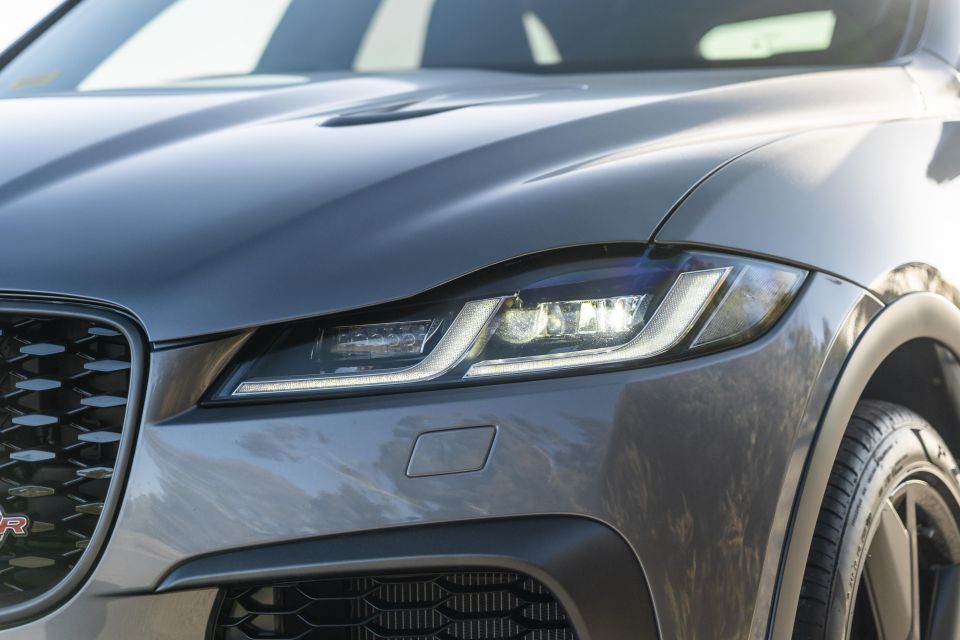
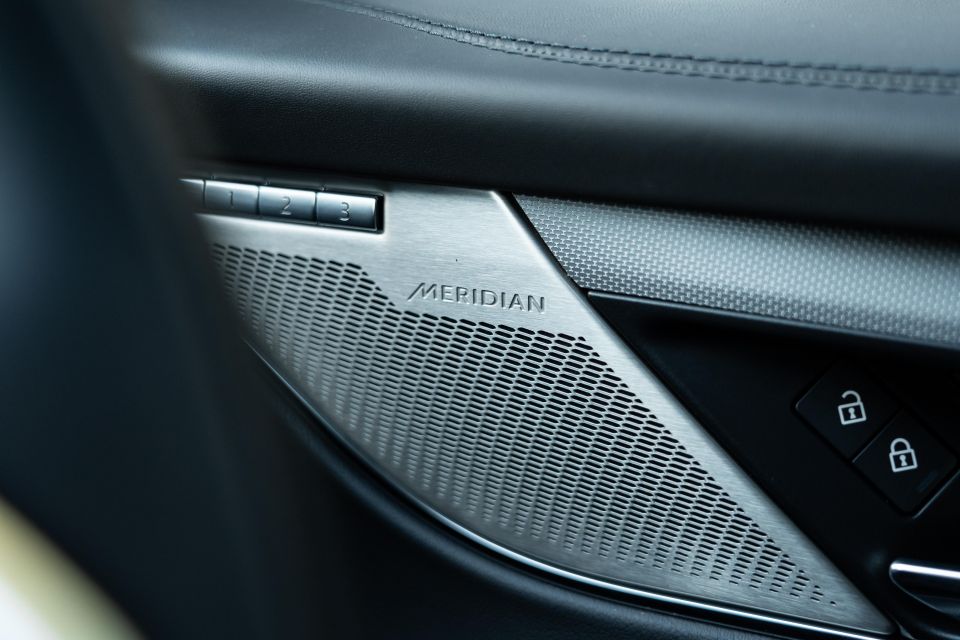
Buy your new car without the stress. It's fast, simple and completely free.

Great service from Travis and team, second time I have used this business would not hesitate to recommend them to anyone
Craig C.
Purchased a Ford Ranger in Sunshine Coast, QLD
CarExpert helped Craig save $7,224 on his Ford Ranger, now let us save you on your next new car.
Get your BEST priceKey equipment highlights include:
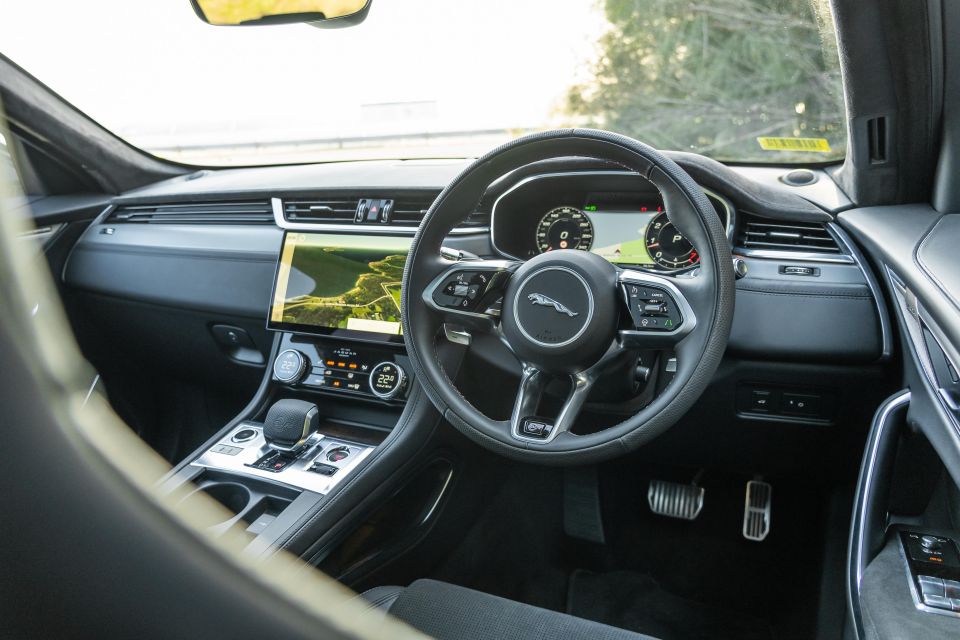
That’s on top of the goodies found lower down in the F-Pace range, like:

Our test vehicle had a number of options fitted, adding a smidge under $11,000 to the sticker price.
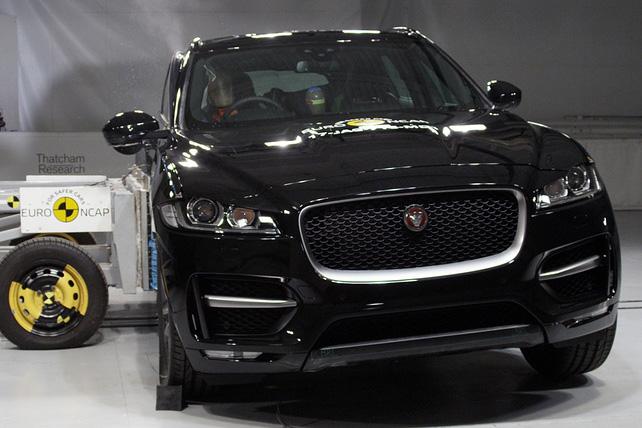
The Jaguar F-Pace line-up wears a five-star ANCAP safety rating based on tests conducted by sister firm Euro NCAP in 2017.
Category scores include 93 per cent for adult occupant protection, 85 per cent for child occupant protection, 80 per cent for pedestrian detection, and 72 per cent for safety assist. Keep in mind this is based on older criteria.
All 2021 Jaguar F-Pace models come standard with the following safety features:
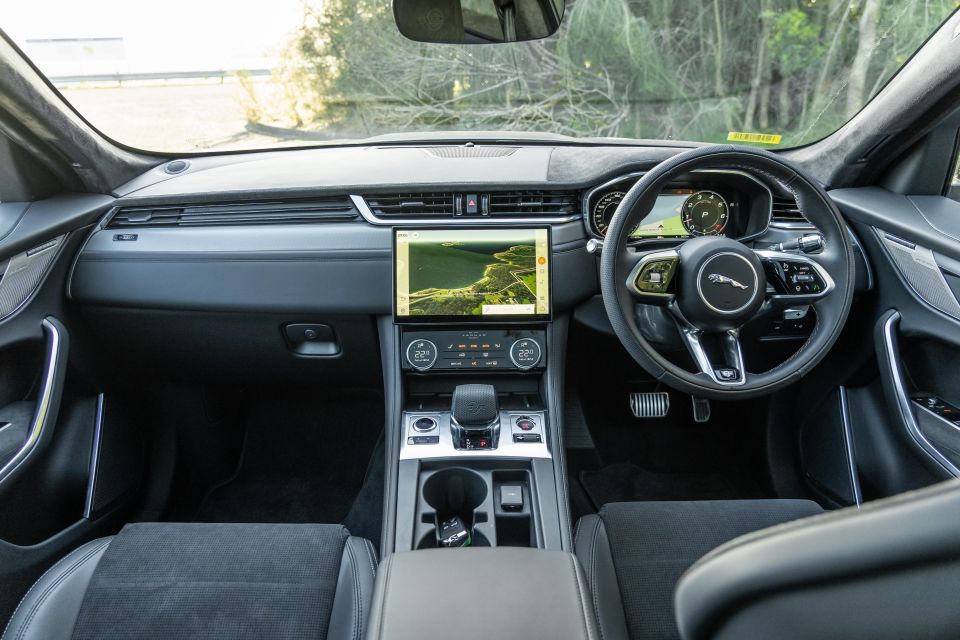
Arguably the biggest changes for 2021 come in the cabin, where Jaguar has rejigged the centre console, popped on a new steering wheel, and applied its gorgeous curved 11.4-inch ‘Pivi Pro’ touchscreen infotainment system.
Compared to early versions of the F-Pace, the interior looks and feels like a properly premium product.
The design is clean and user-friendly, the materials and textures are upmarket and much more competitive with German products, and the higher-resolution, faster displays make the Jag feel really high-tech.
Up front there’s Performance sports bucket seats that are heated, cooled and electrically-adjustable with memory. They look ace and are surprisingly comfortable even for longer journeys.

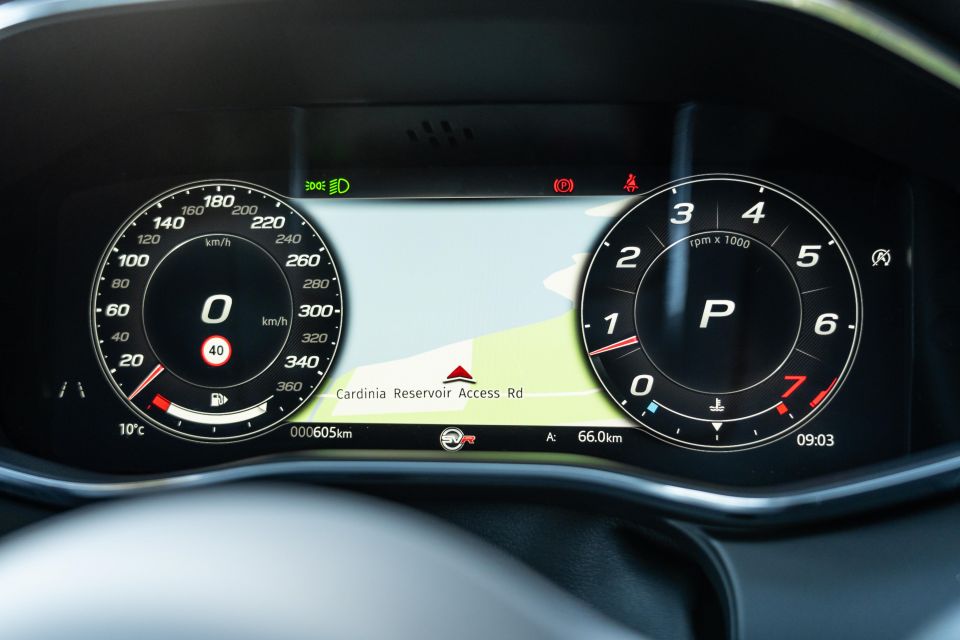
The 14-way adjustment means it’s not hard to find a good driving position, and that futuristic steering wheel yanked from the I-Pace EV is wonderful to look at and sits beautifully in the hand.
Behind the steering wheel there’s a pair of big, polished paddle shifters that are satisfying to ‘click’ when running through the gears, and the touch-capacitive buttons are a little more intuitive to use than some other units we’ve used of late.
The 12.3-inch configurable digital instrument cluster offers a range of layouts and menus that matches that of Audi, and the graphics are pretty clean. My only complaint is the button sequence to navigate through different layouts takes a bit of getting used to.
Moving to that 11.4-inch display. What a beautiful screen.

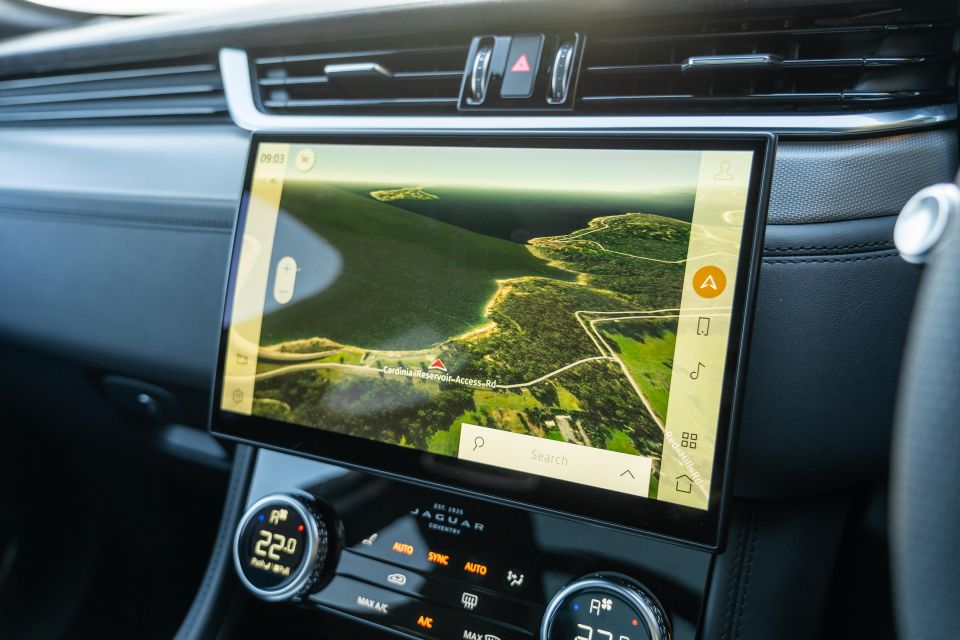
Everyone who saw the F-Pace commented on the display. Whether it was the size (it matters, apparently), the crisp resolution, or the clarity and detail of the native mapping software, it got good reviews from friends and family.
It’s a marked improvement on JLR’s previous systems and finally feels competitive with the best from Germany. Sure, it’s no BMW OS7.0, but at least you aren’t left wanting like you used to be.
Space and storage up front are pretty good, too. There’s a feeling of airiness in the first row and there’s plenty of nooks and cubbies to store your odds and ends.
Two large cupholders live in the centre console ahead of a deep centre cubby beneath the padded leather armrest, and a shelf under the infotainment system hides a rubber-lined pad with an (optional) wireless phone charger.
Worth calling out is the new stubby shift-by-wire control, which does the job but feel a little foreign initially. It’s also right next to the button to open up the exhaust, which was very quickly pressed every time I hopped in.
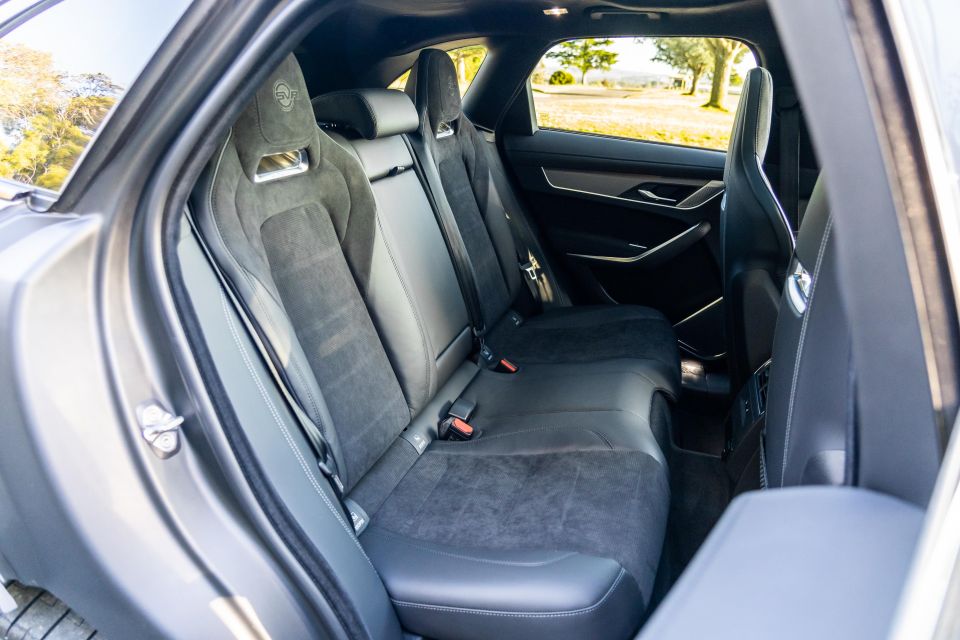
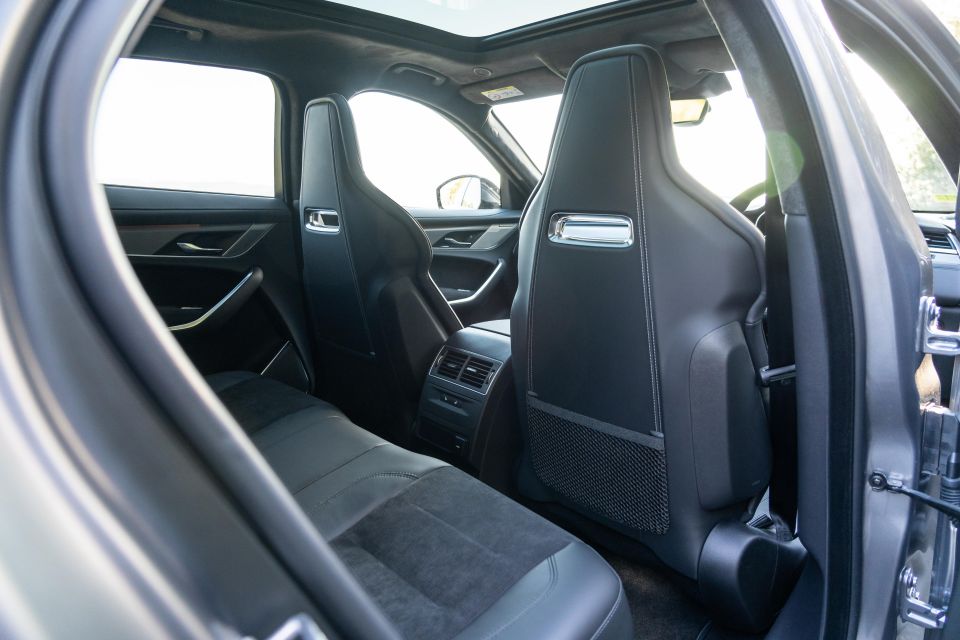
I’m able to comfortably sit behind my own driving position (at 6’1-ish), even with the bulky front bucket seats.
I love that the outboard rear seats get the integrated headrests and funky shoulder wings to make them look like the front buckets, and they also feature ISOFIX child seat mounts for kiddies.
There’s rear air vents – though four-zone climate control is a silly $1890 option – and the outer rear seats also feature heating.
A fold-down centre armrest with cupholders resides in the seatback of the middle pew, and there’s netted map pockets behind both front seats.

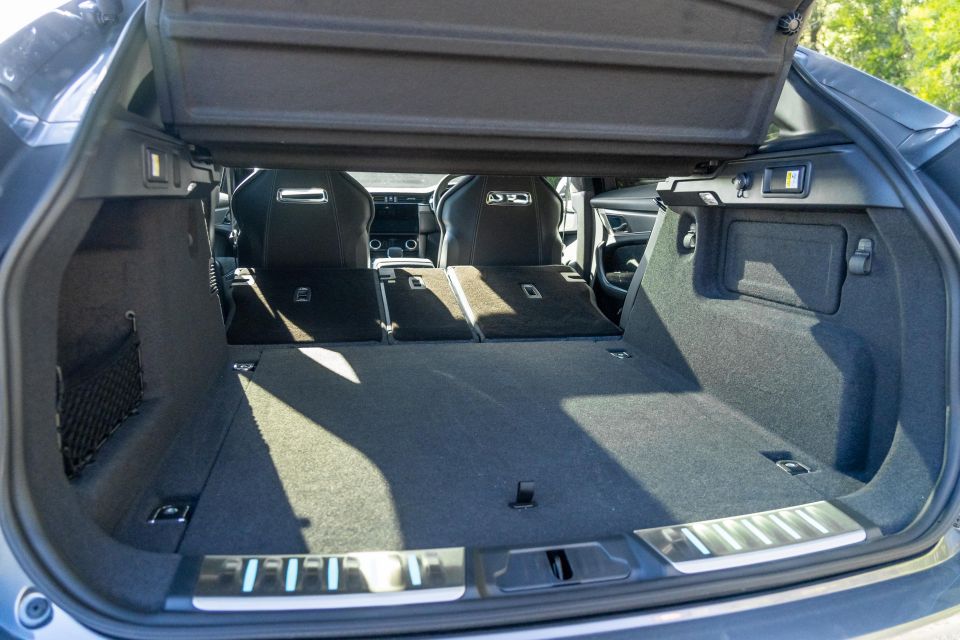
In terms of boot space, Jaguar claims an impressive 793L with the second row in place (to the headliner). The space itself is nice and square, and there’s fixed rings in the floor to attach nets and the like.
Fold the rear seats down and that expands to a pretty accommodating 1842L, though the sporty-looking bench doesn’t fold completely flat.
Fun fact: the rear-seat remote release levers in the boot are a $120 option. Jeez.
Even so, the F-Pace has more luggage volume than rivals like the Stelvio QV (525L), AMG GLC63 S (550L) and X3 M (550L) – it’s closer to SUVs from the class above.
Under the boot floor there’s a space-saver spare tyre with bright orange wheel – watch the video above to see it for yourself.
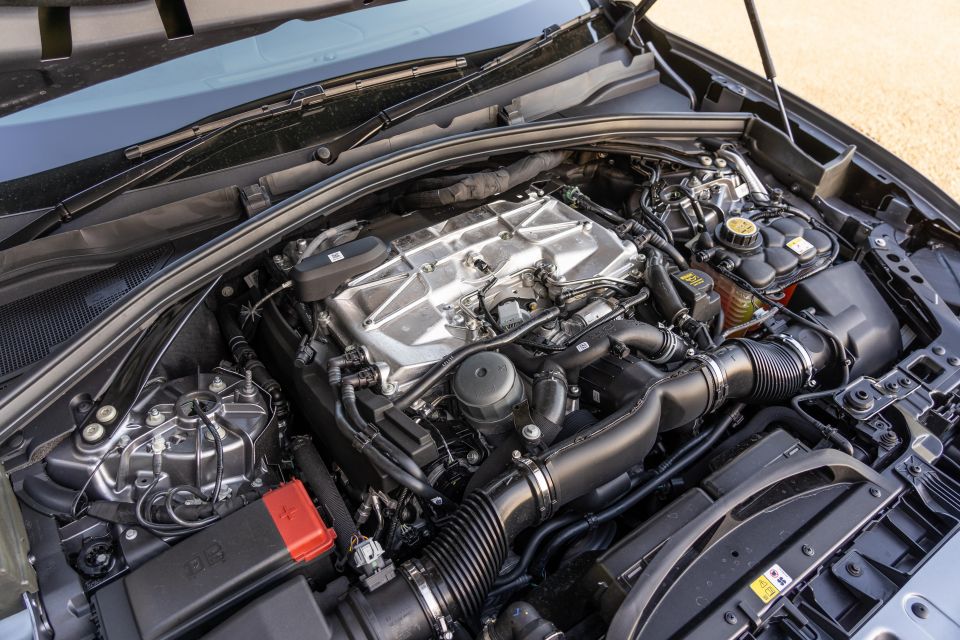
This is where the magic happens.
Power in the F-Pace SVR comes from Jaguar’s iconic 5.0-litre supercharged V8, which in ‘P550’ tune puts out 405kW (5500-6500rpm) and 700Nm (2000-5000rpm). Torque is up by 20Nm compared to the pre-update version.
An eight-automatic transmission drives all four wheels, including paddle shifters and a manual mode, and the V8 breathes through an active sports exhaust system.
Jaguar claims the F-Pace SVR can dash from 0-100 in just 4.0 seconds on its way to a top speed of 286km/h – not that there’s many places in Australia you’d be able to test the latter. That’s a 0.3-second improvement in acceleration, while top speed is up by 3km/h.
Fuel economy is officially claimed at 11.7L/100km on the combined cycle, with idle stop/start technology featuring as standard. The SVR has an 82L fuel tank that requires 95 RON premium unleaded as a minimum – though I’d be using 98 for such a performance-focused motor.
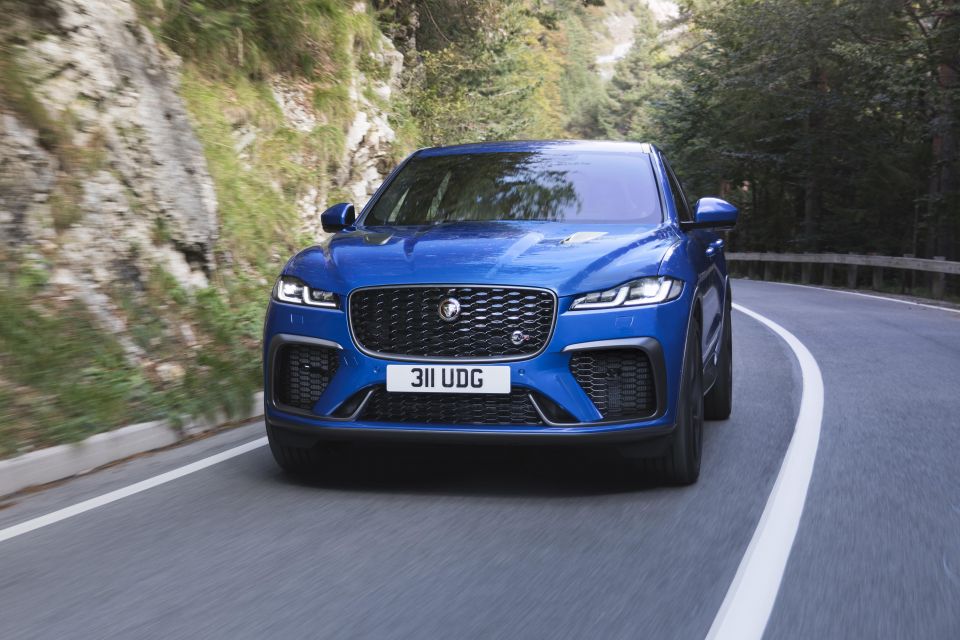
I’ll be the first to admit that I don’t really like performance SUVs. Usually there’s an equivalent sedan or wagon that’s more dynamic, more efficient, and more affordable.
However in the F-Pace SVR’s case, you don’t have an XE or XF as a reference point because Jaguar doesn’t sell a V8 version of either in Australia.
It doesn’t need to; this thing is just epic.
From the moment you start it up, it sends chills down your spine and makes the hairs on the back of your neck stand up. That 5.0-litre Jag V8 has a very distinct growl, there’s no mistaking it for an AMG.
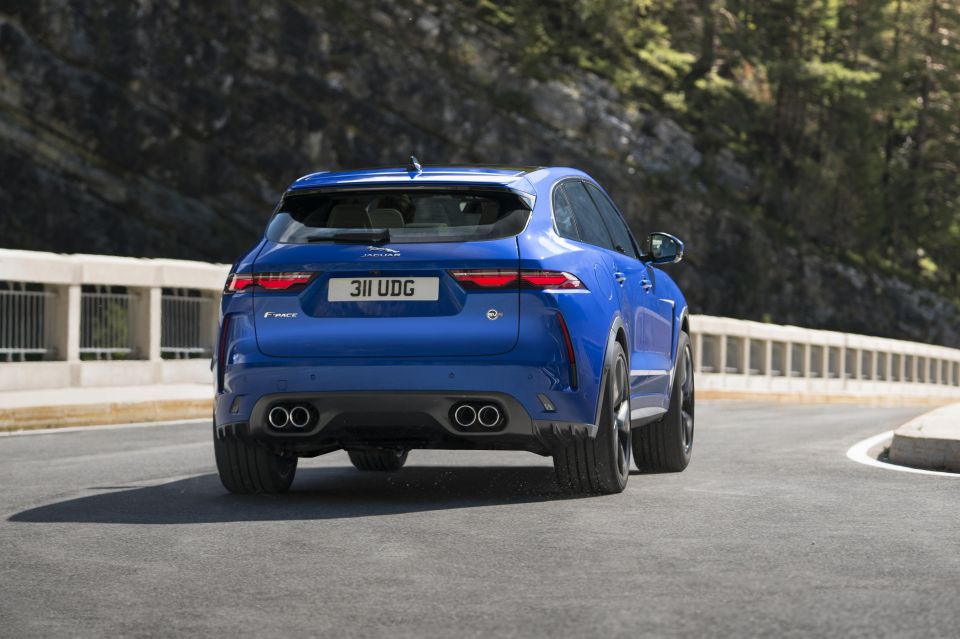
Where expert car reviews meet expert car buying – CarExpert gives you trusted advice, personalised service and real savings on your next new car.
I only spent a weekend driving this thing, meaning there was a couple of commutes to work and a sunny Sunday driving through the Victorian hills in Melbourne’s east having a punt up some winding B-roads.
The F-Pace SVR is fantastic across both extremes.
In town and in traffic the V8 just burbles along effortlessly, with smooth, linear power delivery and a sexy soundtrack even at idle.
The ride is supple on the optional 22-inch wheels fitted to our tester, and there’s little in the way of wind and road noise.
It’s a similar story on the freeway, with the F-Pace’s standard adaptive cruise control taking the strain out of peak-hour commutes on busy freeways, and blind-spot assist is helpful given the F-Pace’s thick D-pillars.

But the real fun starts when you escape the city and send the F-Pace SVR up twisting country roads. You’ll want to set the destination to ‘nowhere’ because you won’t want to go home.
For a big SUV the Jaguar feels surprisingly agile, easily threading through successive corners unbothered by sharp changes in direction. There’s heaps of grip from the staggered 265/40 front and 295/40 rear Pirelli P Zero performance rubber, and ample stopping power from the massive 395mm front and 395mm rear brakes.
Even under heavy throttle early out of a corner the Jag is sure-footed and inspires confidence even in wet weather, as we found out during a stereotypical Melbourne day with wet, dry and windy conditions throughout the journey.
The steering is on the lighter side, but is fluid and direct in feel. It firms up a little in its Dynamic setting, but rivals like the BMW X3 M and Porsche Macan may feel a smidge more connected.
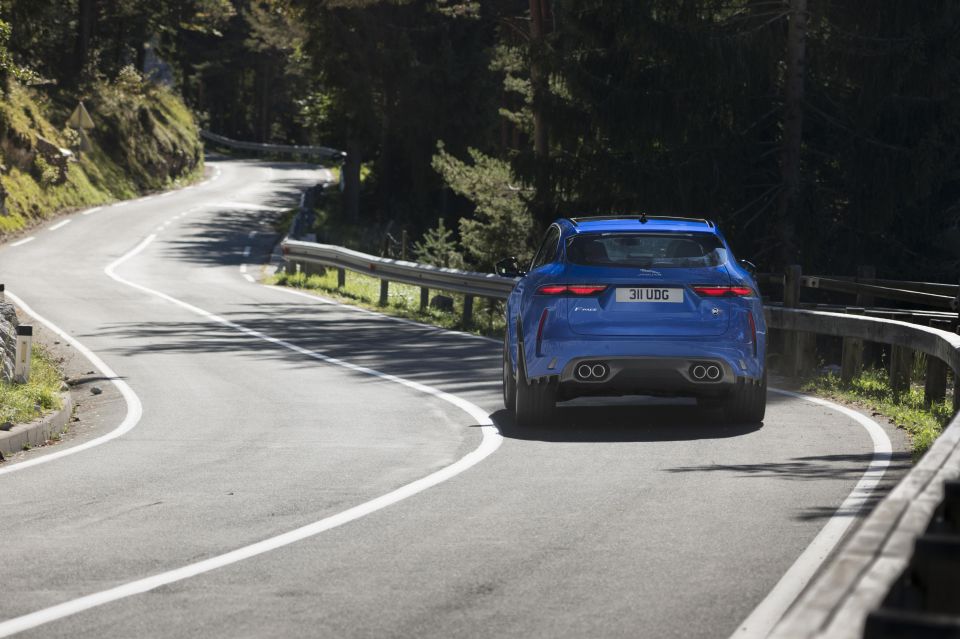
Flick it into manual mode and you can blast out of corners with that addictive V8 soundtrack blaring behind you, with a satisfying crack as you pull the right paddle to upshift.
It’s seriously addictive, and under hard throttle acceleration is brutal. The F-Pace SVR will pin you in your seat, and let out a roar from that quad-tipped exhaust that is befitting of a Big Cat – both figuratively and literally.
There’s so much performance, in fact, that in many ways there’s layers to the SVR’s talents that you just cannot test on Australian strictly-governed roads.
No matter, because the F-Pace SVR is a fine GT wrapped in family-friendly clothing, that you can take for a blast on a B-road or even a track day then take the kids and the dog on a roadtrip.
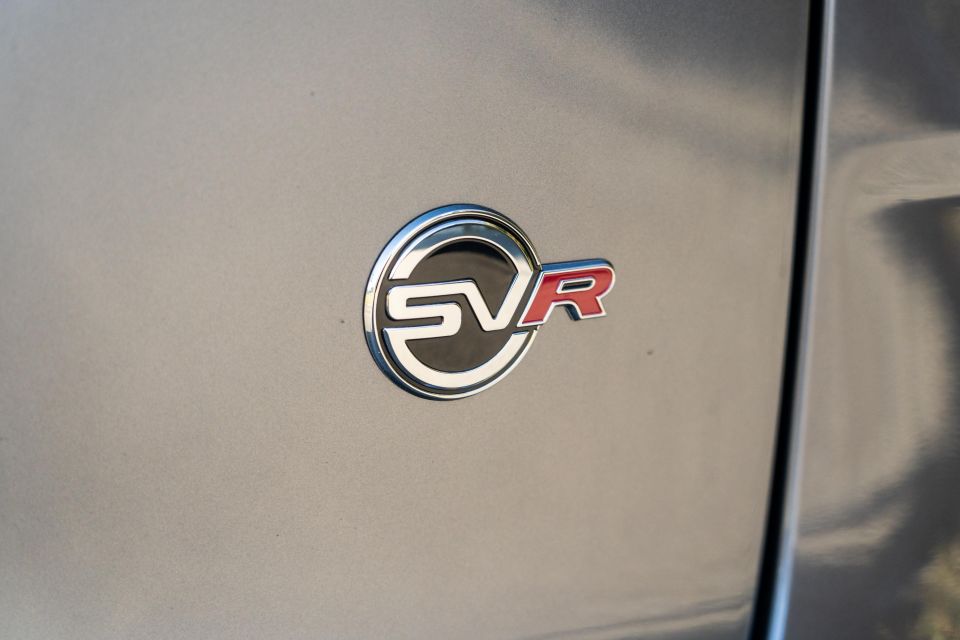
Jaguar now covers its range with a five-year, unlimited-kilometre warranty with five years of roadside assistance that still isn’t the norm in the premium segments.
Genesis, Mercedes-Benz and Volvo all offer five years of cover, but Alfa Romeo, Audi, BMW and Porsche don’t. Something to consider if you’re planning to hold onto your car for a bit.
Servicing can be handled with a pre-paid package covering five years or 130,000km (whichever occurs first. For the SVR, it’ll cost $3750.

Now on the topic of fuel consumption, if you’re buying a supercharged V8 Jag efficiency probably isn’t going to be a priority – just a wild guess.
I managed an indicated 14.4L/100km over 484km of mixed driving, including plenty of enthusiastic squirts on country roads. A bit up on Jaguar’s official 11.7L/100km claim, but not bad considering there was a bit of peak-hour commuting bundled in also.
Worth noting is the F-Pace SVR’s pretty large 82L fuel tank and 95 RON premium unleaded minimum requirement.
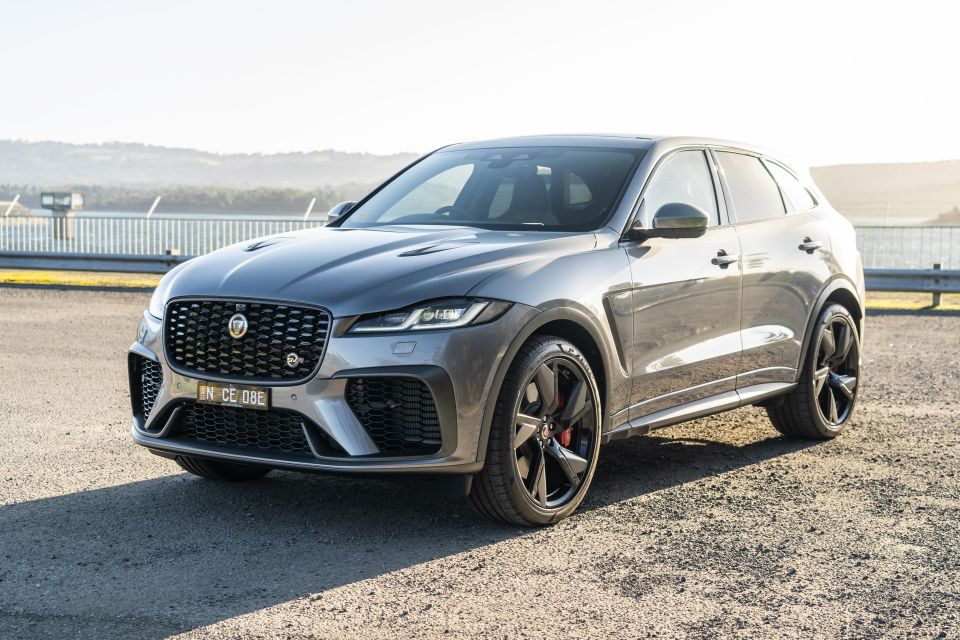
Buy your new car without the stress. It's fast, simple and completely free.

Great service from Travis and team, second time I have used this business would not hesitate to recommend them to anyone
Craig C.
Purchased a Ford Ranger in Sunshine Coast, QLD
CarExpert helped Craig save $7,224 on his Ford Ranger, now let us save you on your next new car.
Get your BEST priceI came away pleasantly surprised with the F-Pace SVR.
Performance SUVs usually aren’t my thing, but the Jag’s looks, performance and dynamic talents are impressive without having to say… for an SUV.
That’s before you factor in the unique character that comes with its blaring supercharged 5.0-litre V8, excellent infotainment, its low-for-the-segment starting price, and relative exclusivity compared to something like an AMG GLC or X3 M.
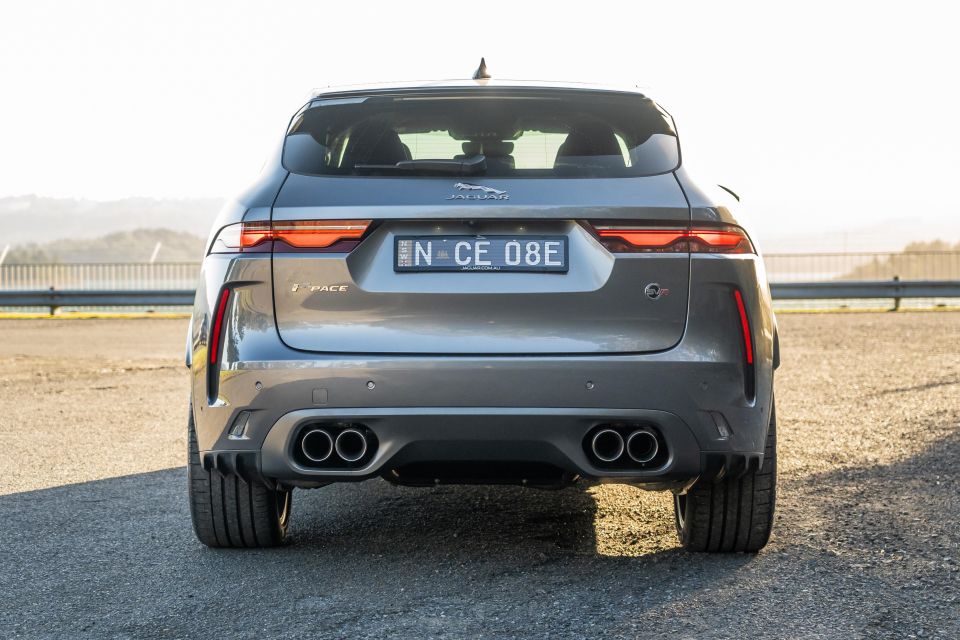
We have to knock it for some of the silly options and the light-ish steering, but otherwise there’s not much else to complain about.
If I was shopping in the segment and price bracket, the Jaguar would be one of my top picks. Cooler and classier than a Benz or BMW, more raucous than the Alfa, and less clean and clinical than the Porsche.
The F-Pace SVR is a high-riding British GT that’s genuinely fun to drive and one of your last opportunities to get JLR’s fire-breathing supercharged V8 before European emissions laws relegate it to the history books. Definitely worth a look.
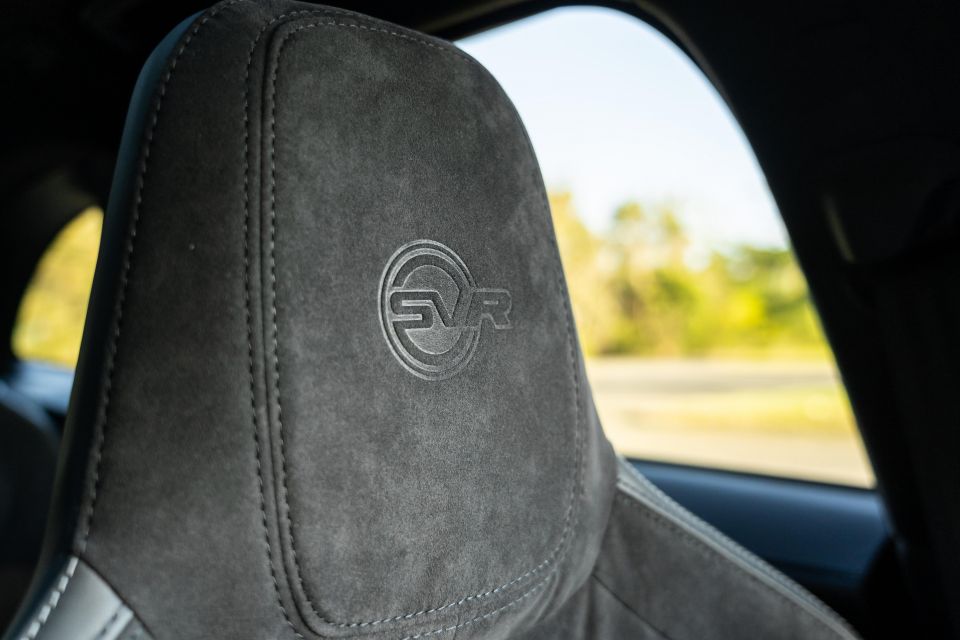
Click the images for the full gallery
MORE: Everything Jaguar F-Pace
Where expert car reviews meet expert car buying – CarExpert gives you trusted advice, personalised service and real savings on your next new car.
James is an automotive journalist based in Melbourne, Australia. Before joining CarExpert.com.au in 2020, James has worked at leading auto media outlets including Carsales and CarAdvice, as well as at Pulse agency for Ford Australia's communications team. In 2019 James made Mumbrella's 'Top 20 most prolific web authors in Australia' list after publishing 1,360 articles between March 1, 2018 and February 28, 2019 for CarAdvice. James is also an Ambassador for Drive Against Depression – an Australian charity whose mission is to support mental wellness through the freedom of driving and a shared love of cars.


James Wong
6 Days Ago


Max Davies
5 Days Ago


Josh Nevett
3 Days Ago


Max Davies
3 Days Ago


Max Davies
2 Days Ago


Derek Fung
1 Day Ago